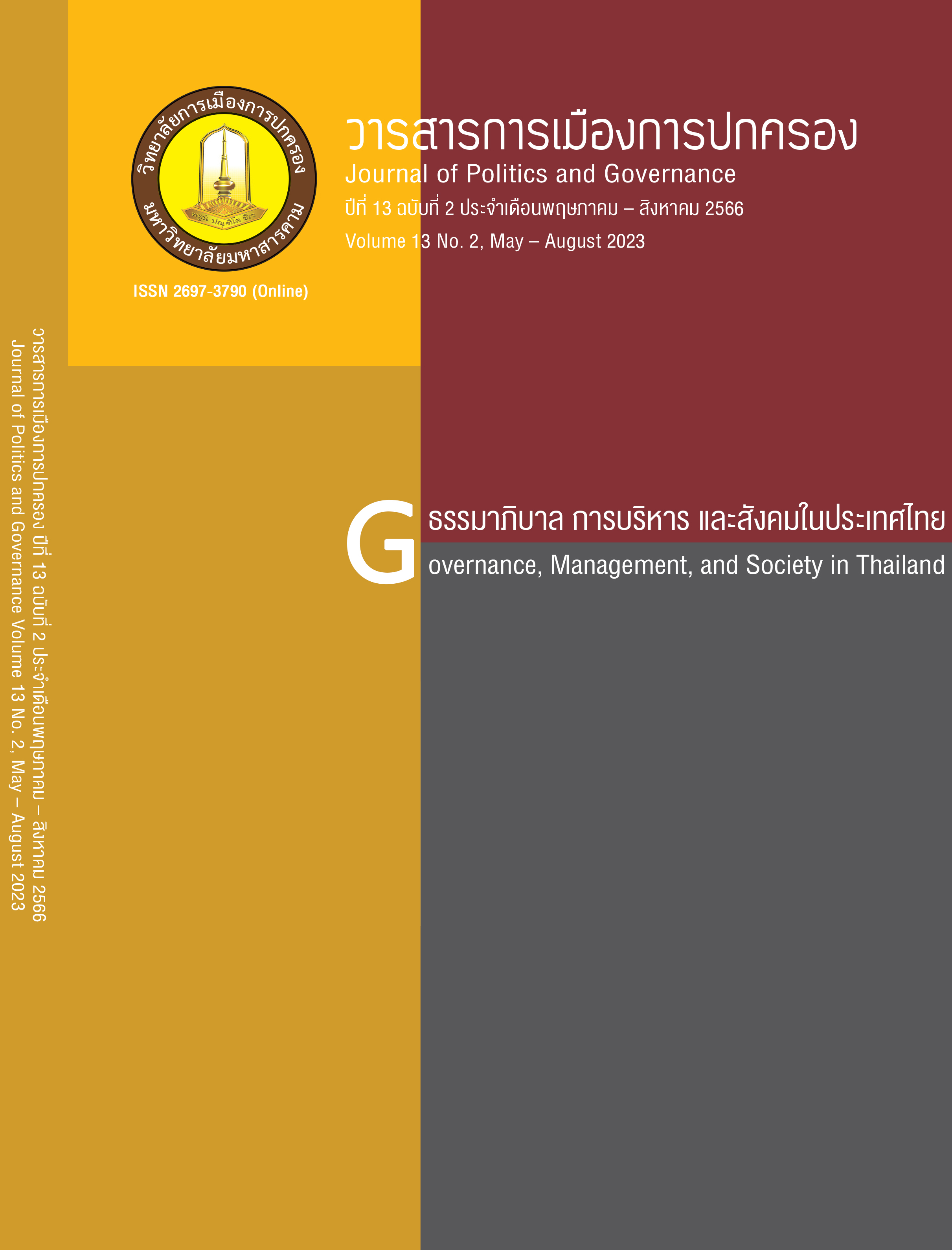Thailand’s Financial Literacy and Informal Debt Formation in 2016
Main Article Content
Abstract
The objectives of this study were to examine, first, the association between financial literacy and informal debt formation and, second, the internal association among the three factors of financial literacy, namely financial knowledge, financial behavior, and financial attitude. These three factors influence in turn the following three factors of informal debt, namely the amount of informal debt, the average amount of informal debt per person, and the number of people with informal debt. Using a quantitative research approach to gather secondary data from the Bank of Thailand’s 2016 Financial Literacy Survey Report and the Ministry of Finance’s 2016 State Welfare Registration Program, this study concluded that the factors of financial literacy were not correlated with the factors of informal debt. Financial knowledge was found to have an internal relationship with financial behavior, indicating that provinces with a high financial knowledge level will also have a high financial behavior level. Concerning the internal relationships among the three informal debt factors, the number of people with informal debt was correlated with the amount of informal debt and the average amount of informal debt per person. This correlation suggests that provinces with a higher number of people with informal debt will also have a high amount of informal debt and a high average amount of informal debt per person.
Article Details

This work is licensed under a Creative Commons Attribution-NonCommercial-NoDerivatives 4.0 International License.
References
Abreu, M., & Mendes, V. (2010). Financial literacy and portfolio diversification. Quantitative finance, 10(5), 515-528.
Ajzen, I. (1991). The theory of planned behavior. Organizational behavior and human decision processes, 50(2), 179-211.
Ameliawati, M., & Setiyani, R. (2018). The influence of financial attitude, financial socialization, and financial experience to financial management behavior with financial literacy as the mediation variable. KnE Social Sciences, 811–832-811–832.
Disney, R., & Gathergood, J. (2013). Financial literacy and consumer credit portfolios. Journal of Banking & Finance, 37(7), 2246-2254.
Finance, M. o. (2019). Microfinancial Inclusion Map. Retrieved from https://1359.go.th/mim/source/www/list.php?fbclid=IwAR3DLuS_AU_ oiuUxcss_XUkSy4WuecrV05GgryOBREi957UojOfUmMioVU8
French, D., & McKillop, D. (2016). Financial literacy and over-indebtedness in low-income households. International Review of Financial Analysis, 48, 1-11.
Hung, A., Parker, A. M., & Yoong, J. (2009). Defining and measuring financial literacy.
Lusardi, A., & Mitchell, O. S. (2014). The economic importance of financial literacy: Theory and evidence. Journal of economic literature, 52(1), 5-44.
Lusardi, A., & Tufano, P. (2015). Debt literacy, financial experiences, and overindebtedness. Journal of Pension Economics & Finance, 14(4), 332-368.
Mudzingiri, C., Muteba Mwamba, J. W., & Keyser, J. N. (2018). Financial behavior, confidence, risk preferences and financial literacy of university students. Cogent Economics & Finance, 6(1), 1512366.
Norvilitis, J. M., Merwin, M. M., Osberg, T. M., Roehling, P. V., Young, P., & Kamas, M. M. (2006). Personality factors, money attitudes, financial knowledge, and credit-card debt in college students 1. Journal of applied social psychology, 36(6), 1395-1413.
Perry, V. G., & Morris, M. D. (2005). Who is in control? The role of self-perception, knowledge, and income in explaining consumer financial behavior. Journal of consumer affairs, 39(2), 299-313.
Rajna, A., Ezat, W. S., Al Junid, S., & Moshiri, H. (2011). Financial management attitude and practice among the medical practitioners in public and private medical service in Malaysia. International Journal of Business and Management, 6(8), 105.
Schwab, C., Iannicola Jr, D., Beck, T., Hira, T., Bryant, J. H., Parker, J., . . . Dawson, C. (2008). President’s advisory council on financial literacy. Annual Report to the President. Washington: The department of the treasury.
Stango, V., & Zinman, J. (2009). Exponential growth bias and household finance. The Journal of Finance, 64(6), 2807-2849.
Thailand, B. O. (2018). Financial Literacy Survey Report: 2018 Results. Retrieved from ศรี, ร. ฤ. บ., & ธรรม, อ. ศ. ว. ณ. ป. ส. (2020). ศึกษาสาเหตุการเกิดหนี้นอกระบบของ กลุ่มคนฐานราก (กรณี ศึกษา: หนี้ นอก ระบบ ธนาคารออมสิน สาขา สงขลา). Paper presented at the Rangsit Graduate Research Conference: RGRC.


